23
08/2025
Why Your Computer Store Needs a Tech-Overhaul: From Static Counters to Dynamic Experiences
Discover how computer stores can shift from static counters to dynamic experiences, with key designs & steps to achieve the tech-overhaul.
Let’s be honest: the traditional computer store—with its rows of identical glass counters, harsh fluorescent lighting, and products locked behind cabinets—feels like a relic from the past. It’s a place where technology goes to look boring. But what if I told you that your store could become a destination? A place where people don’t just come to buy things, but to experience them?
Welcome to the era of the tech experience space.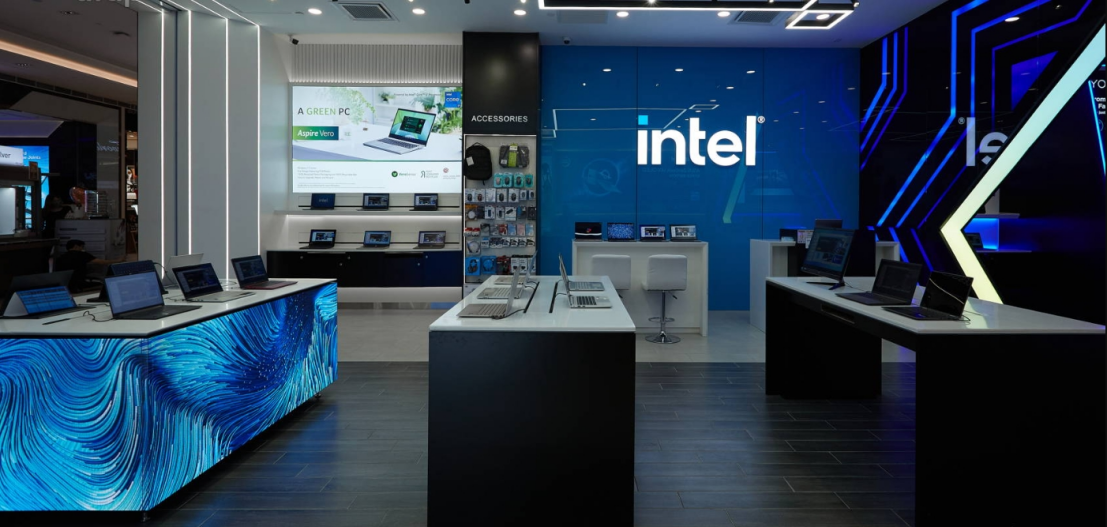
The Problem with “Computer Store Templates”
For decades, computer retail has relied on the same tired formula: display products, list specifications, offer discounts. But this approach ignores one crucial fact: people don’t buy technology based on specs alone. They buy based on emotion, experience, and the story a brand tells.
Think about it: when was the last time you walked into a store and felt genuinely excited? If your answer is “not recently,” you’re not alone. Most computer stores fail to create an emotional connection. They’re designed for transactions, not interactions.
But the world has changed. Today’s consumers—especially younger generations—crave spaces that feel immersive, interactive, and Instagram-worthy. They want to touch, test, and play with products in an environment that reflects the innovation those products represent.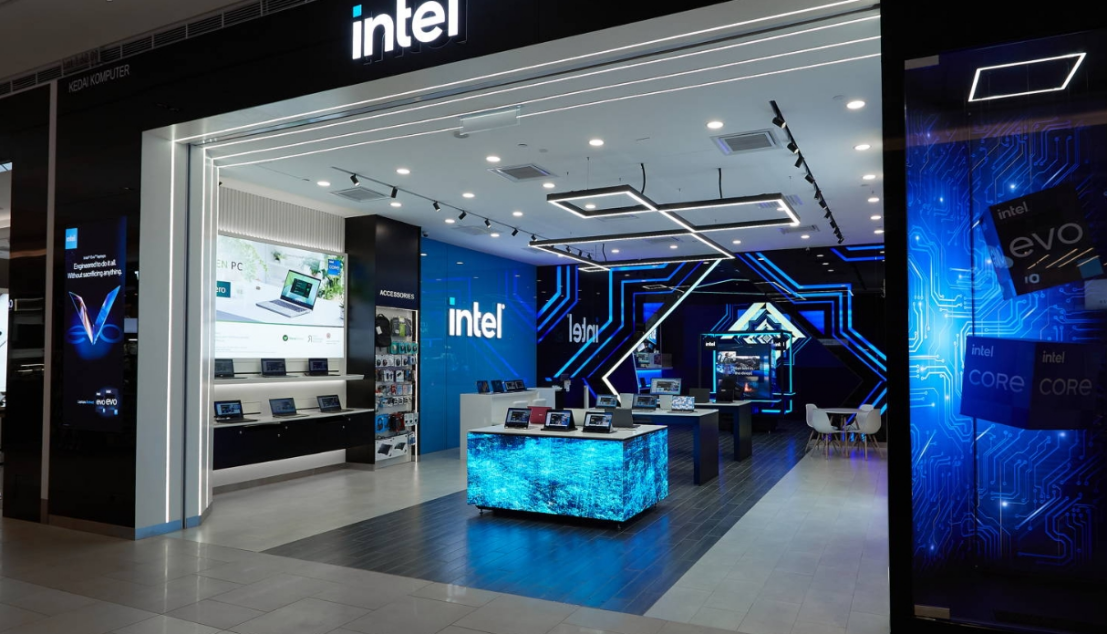
The Solution: Design with Tech-Savvy Flair
Let’s break down what makes a store design truly “tech-forward”—and why the example below is a game-changer.
1. The All-LED Central Island: Where Products Come to Life
The heart of this design is the central island cabinet wrapped in dynamic LED displays. This isn’t just a counter; it’s a statement.
Why it works:
◎Visual Energy: From afar, the LED panels create a sense of movement and vitality. Demonstrations loop on screens, making the entire structure feel alive.
◎Flexibility: The content can be updated instantly—new product launches, promotional videos, or interactive demos—keeping the space fresh and engaging.
◎High-End Aesthetic: The combination of light blue panels and a white countertop feels sleek and futuristic, yet neutral enough to let the products shine.
Pro Tip:
Leave subtle gaps in the countertop for cables to pass through. It’s a small detail, but it keeps the display clean and reinforces the sense of seamless technology.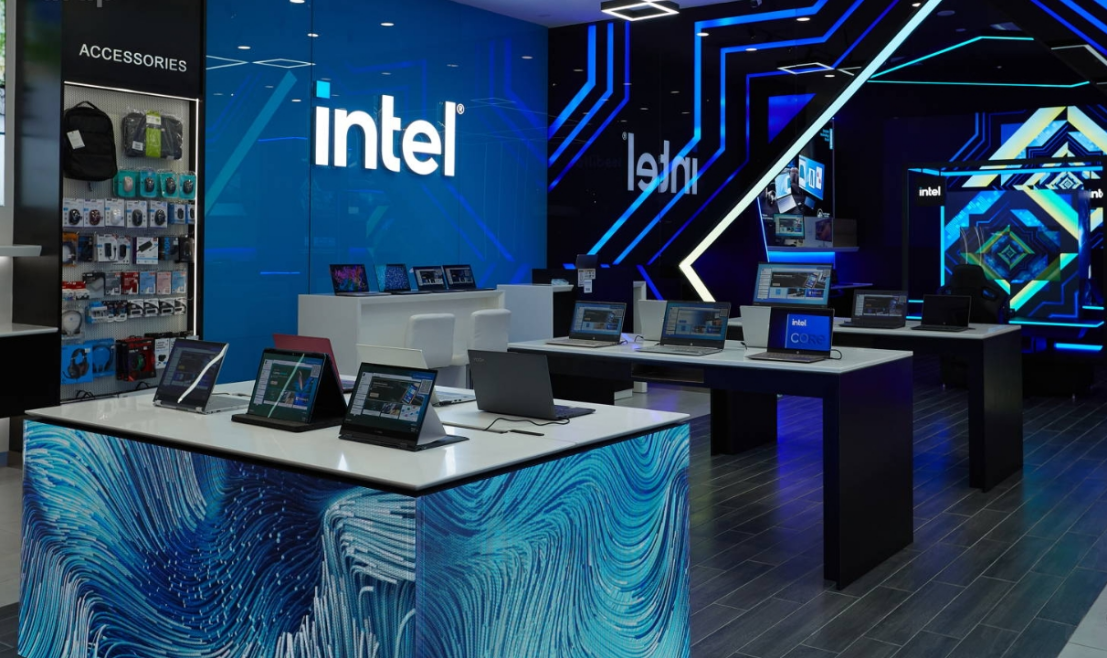
2. Smart Display Racks & Tables: The Silent Salespeople
While the central island captures attention, smart display racks and tables are the unsung heroes that drive sales.
◎Interactive Product Discovery:
Imagine a customer touching a display shelf to instantly trigger a product video on nearby screens. Or a smart table that lights up specific features as hands approach. These aren’t sci-fi concepts—they’re tools already boosting conversion rates by up to 35% in forward-thinking stores.
◎Adaptive Demos:
Smart displays can detect when a customer picks up a laptop and automatically launch tailored content: benchmark results, design details, or comparison guides. This eliminates the "static spec sheet" problem and makes exploration intuitive.
◎Inventory Integration:
RFID-enabled shelves update inventory in real-time, alerting staff when products need restocking or when a high-value item is being demoed. This turns every interaction into data-driven opportunities.
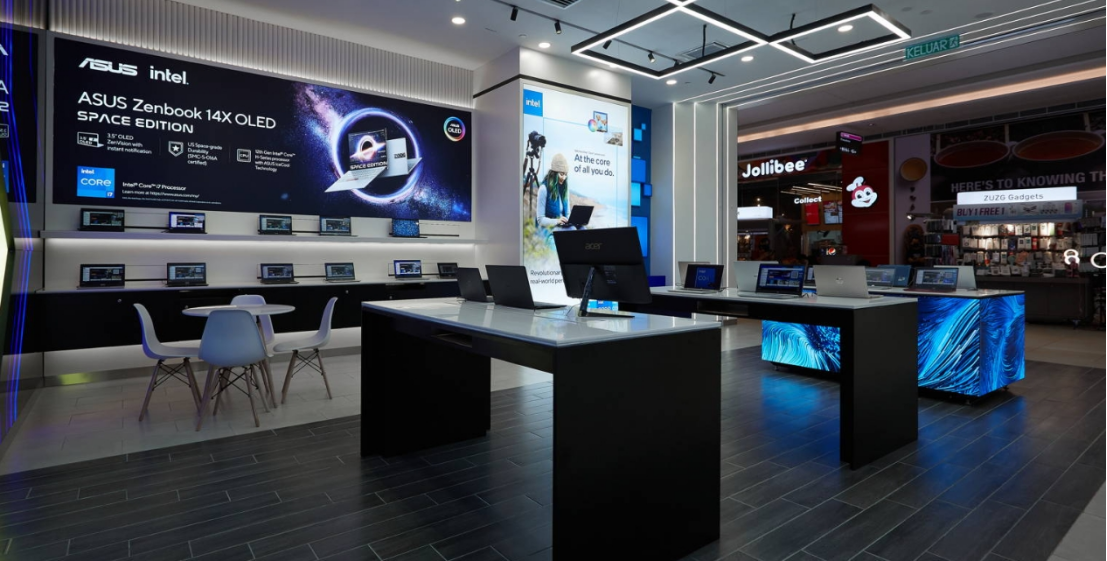
3. Minimalism with Purpose
The island’s cubic shape and clean lines aren’t just stylistic choices; they’re strategic.
◎Less is More: By avoiding clutter and excessive decoration, the design emphasizes the products themselves. This aligns perfectly with tech brands like Intel, whose identity revolves around efficiency and innovation.
◎Open Display: The wide, flat surface encourages customers to touch, explore, and compare devices without barriers. This openness builds trust and reduces the pressure to “just buy.”
4. The Rectangle Table: Simple, Smart, Functional
Flanking the central island are rectangular tables that complement the main display.
Design Logic:
◎Crisp Lines: Straight edges and a no-fuss design convey professionalism and clarity.
◎Hidden Infrastructure: Though minimalist on the surface, these tables incorporate discreet compartments for power outlets and cable management. No more tangled wires or awkward adapters.
5. The Background Wall: Setting the Stage
A tech space isn’t just about products; it’s about atmosphere. The background wall here is a masterclass in branding.
◎Color Psychology: Deep blue and black create a sense of depth and sophistication, evoking the mystery and promise of technology.
◎Brand Prominence: The white “Intel” logo pops against the blue backdrop, reinforcing brand recognition without feeling aggressive.
◎Circuit Board Patterns: The right wall features a subtle circuit board texture, lit by blue LED strips. This isn’t just decoration—it’s a narrative device that ties the space to the essence of computing.
6. Lighting as a Storyteller
Lighting is the unsung hero of this design.
◎Ceiling LEDs: Square light strips provide even, shadow-free illumination while visually expanding the space.
◎Accent Lighting: Blue LEDs trace the circuit patterns on the walls, highlighting the design’s thematic elements and creating a cohesive glow.
◎Spotlights: Strategic highlights draw attention to key products, making them feel exclusive and desirable.
Why Smart Displays Are Non-Negotiable in Modern Retail
1.They Bridge Digital & Physical:
Smart racks sync with mobile apps, allowing customers to scan products for reviews, availability checks, or even custom configurations. This turns browsing into a seamless omnichannel experience.
2.They Learn & Adapt:
Built-in sensors collect data on customer engagement: which products are touched most, how long demos are watched, which features trigger interest. This intelligence fuels better merchandising and staff training.
3.They Drive Impulse Actions:
A study by Retail TouchPoints found that interactive displays increase unplanned purchases by 27%. When a screen highlights a limited-time offer as you hold a product, resistance crumbles.
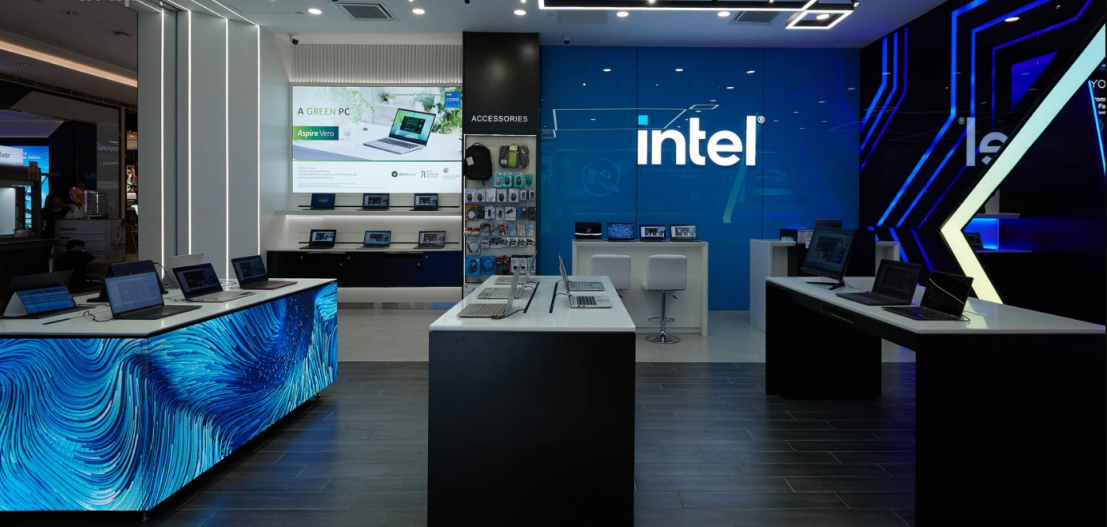
How to Bring This Vision to Life
Ready to transform your store? Here’s how to start:
1.Audit Your Space:
Identify areas that feel stagnant or cluttered. Could a central island replace traditional counters? Is your lighting enhancing or diminishing the experience?
2.Invest in Key Features:
Prioritize elements that deliver the highest impact: dynamic lighting, clean lines, and interactive displays.
3.Work with Experts:
Partner with designers who understand both technology and retail psychology. (Hint: Firms like Fixturistic specialize in this very niche.)
4.Iterate and Evolve:
Use customer feedback and sales data to refine the space over time. The best stores are always evolving.
Conclusion: Stop Selling Products. Start Selling Experiences.
The future of retail isn’t about bigger stores or louder promotions. It’s about creating spaces where people want to be—spaces that tell a story, spark curiosity, and make technology feel human.
So, ask yourself: Is your store a placeholder for products? Or is it a stage for experiences?
If you’re ready to build the latter, the time to start is now.